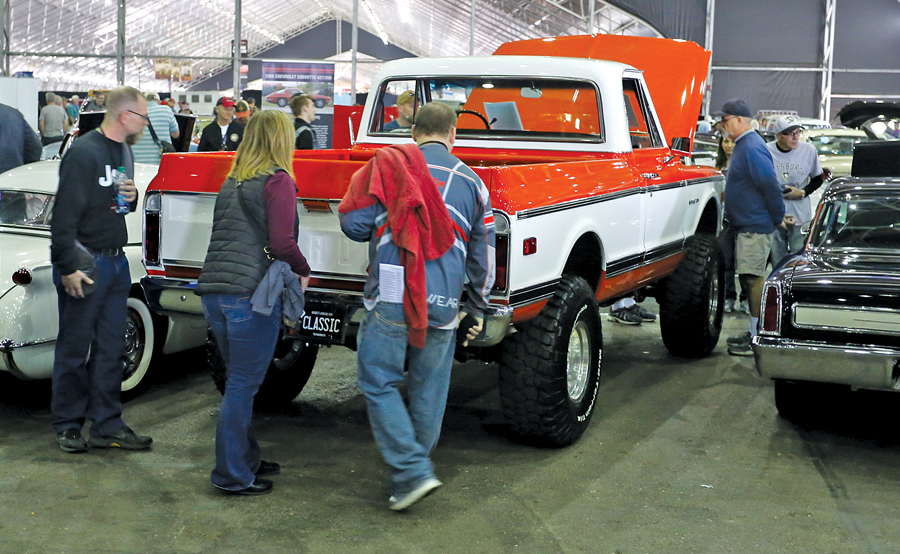
After years of watching the market at SCM and ACC, once thing has become clear: change is the only constant.
Scottsdale’s numbers are in. In total, the 2019 auctions brought $247m, which was pretty close to last year’s total of $249m. Combine that with Mecum’s $94m Kissimmee sale, and January 2019 kicked off with $341m in collector car sales. That’s good news for the market, but what can we learn from it?
In truth, the big numbers do tell a story, but it’s only part of a bigger story. Understanding the market requires more than just knowing about the cars and the numbers they bring on an auction block.
If you really want to be able to see trends before they become yesterday’s news, you have to wade in waist-deep and start talking to the people who are buying and selling to try to understand their motivations. The market is a construct, made up of motoring history, psychology, sociology and economics. The proportions of each factor vary per person, too. It’s an ever-changing balance that can be hard to nail down — but an auction gives a good snapshot.
These topics come up all the time here at ACC — after all, tracking the market is at the core of what we do.
This year, we discussed the market at ACC’s seminar at Barrett-Jackson in Scottsdale, AZ, where I was joined on stage by Ken Lingenfelter, Jay Harden, Sam Stockham, Carl Bomstead and B. Mitchell Carlson. We picked cars to buy, sell, and hold in 2019. We talked about Tri-Five Chevrolets, Grand Nationals, fourth-gen F-bodies, and Ford and Chevy trucks from the 1970s. Many of our choices came down to more than just observed values, and were shaped by observed behaviors.
Even that caused trouble, though, as Jay and Carl both used the “but what are you going to go do with it?” sentiment to support their own picks and question each other’s — Carl at the seminar, and Jay later that night.
In Carl’s case, it was a Buy for V12 and V16 CCCA Full Classic coupes, and for Jay, it was a Hold on well-done resto-mod muscle cars. The fundamental difference there is in how each views the usability of an old car. Jay wants go to roast tires and stand out in a car built to be used, while Carl sees value in an organized tour that recognizes and celebrates stately vintage classics. The two picks are at opposite ends of the car spectrum. You can find sales from this January’s event that support both, so who is right?
For an end-user, it depends on your point of view, your budget, and your immediate circle of friends. I tend to believe both panelists would be at home in each other’s picks. But Jay’s muscle cars are probably more in line with a younger demographic at an entry level, and if we’re talking about the future, that’s an important factor.
Trucks, trucks, trucks
From my time at Barrett-Jackson, a few things stood out. First, it seemed like there were a greater number of modified cars on-site this year, and they tended to do well across the auction block. From Corvettes through Mustangs, Novas, Chevelles and beyond, there were simply more nicely done non-stockers on offer than I remember seeing in years past. But bigger than that was the downright frenzy that seemed to circle around classic American pickups.
I’ve written about trucks here several times now, and the same trends seem to keep right on moving. Blue-collar idols drove these things when they were new — the kind of people today’s buyers looked up to for answers and for help when we were young. Maybe interest here is reclamation of that past, or maybe it’s because old trucks are just cool.
Either way, something drove a buyer to pay a huge $137,500 for a nice 1969 K10 shortbed Chevrolet at Barrett-Jackson, and it wasn’t alone in achieving a hefty price. I spoke with Rick Anderson, who bought a very nicely done 1972 K10 shortbed on ¾-ton axles. Rick was buzzing post-block as his daughter crawled all over their new $63,800 purchase. “I’ve always wanted one.” was his response when I asked him why he chose it — that and the one next to it was lifted too much, with too-large tires.
Price aside, I can’t argue with his reasoning. Still, there’s no wider spread in values than what we’re seeing between unrestored, rough rigs and shiny top-level restos. Even years after the trend began, money is still being made by skilled builder-sellers.
The next big thing
A few years ago, the hot ticket was ’70s Trans Ams. Then it was Fox-body Mustangs. After that, trucks and SUVs took over as rising stars, and they obviously continue to hold strong in that spot. But for how long?
The market is trending younger, both in terms of buyers and in terms of the cars being bought. Newer trucks will start to do well — Jay gets into that a bit in his “Horsepower” column on p. 46. But that doesn’t mean that classics are a bad buy, or that Tri-Five Chevrolets will bottom out completely when their current buyer pool ceases to be buying.
After all, if there’s one thing that’s constant about the market, it’s that next year will be different.